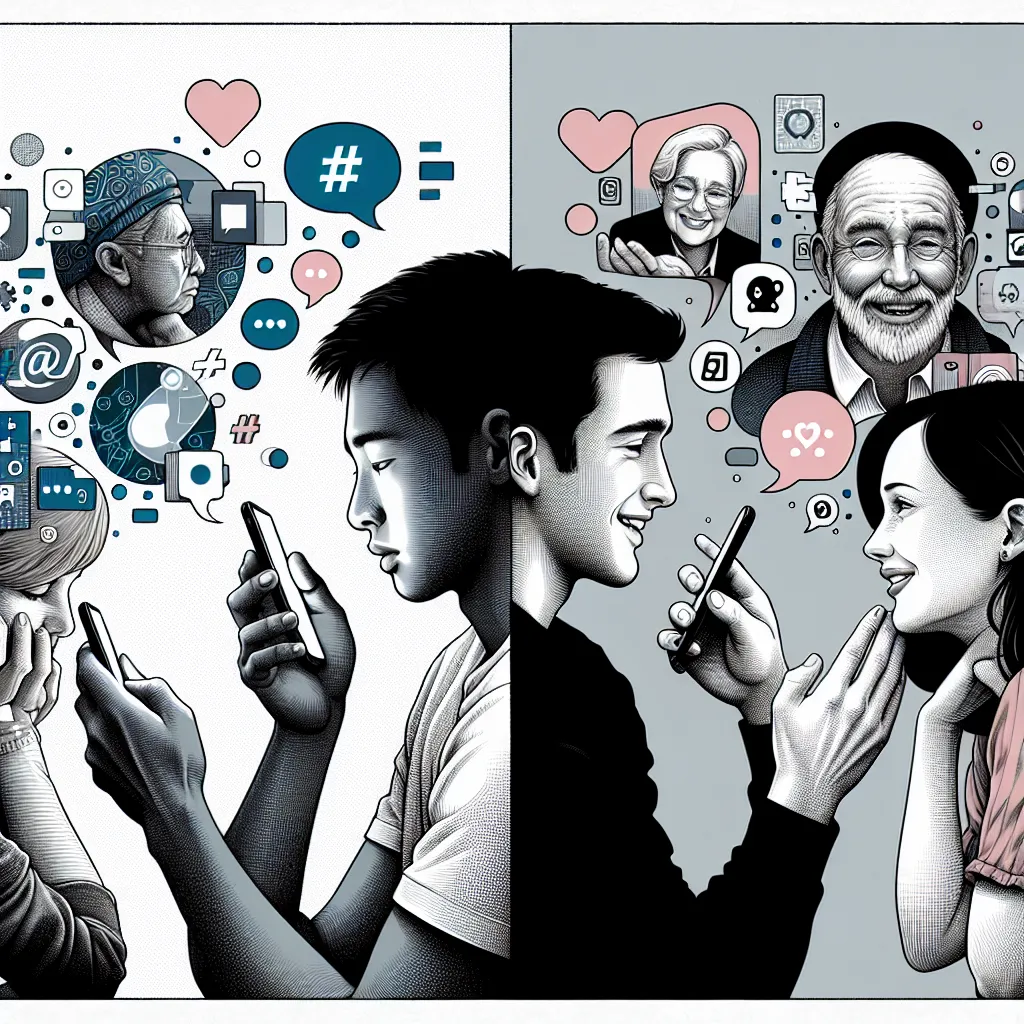The effects of digital technology on social interaction have become an increasingly popular topic in IELTS Writing Task 2 essays. As an experienced IELTS instructor, I’ve observed this theme appearing more frequently in recent years, reflecting its growing relevance in our modern society. Let’s explore this topic in depth, providing you with valuable insights and sample essays to help you excel in your IELTS writing task.
Nội dung bài viết
Analyzing the Topic and Its Relevance
The relationship between digital technology and social interaction is a complex and multifaceted subject that aligns perfectly with the IELTS exam’s focus on contemporary issues. This topic allows test-takers to demonstrate their critical thinking skills and ability to discuss societal changes.
Based on recent trends, we can expect to see questions related to this theme appearing in various forms. Here are a few examples of potential essay questions:
-
Some people believe that digital technology has improved social interaction, while others argue it has reduced face-to-face communication. Discuss both views and give your opinion.
-
To what extent do you agree or disagree that social media platforms have negatively impacted the quality of personal relationships?
-
Many people spend more time interacting online than in person. Do you think this trend is positive or negative for society?
For our sample essays, we’ll focus on the first question, as it provides a balanced approach to discussing the topic.
Sample Essay Question
Some people believe that digital technology has improved social interaction, while others argue it has reduced face-to-face communication. Discuss both views and give your opinion.
Analyzing the Question
This question requires you to:
- Discuss the positive effects of digital technology on social interaction
- Explore the argument that it has reduced face-to-face communication
- Present your own opinion on the matter
Remember to address all parts of the question and provide a balanced discussion before stating your position.
Sample Essay 1 (Band 8-9)
In the digital age, the impact of technology on human interaction has become a topic of intense debate. While some argue that digital platforms have enhanced our ability to connect with others, others contend that they have diminished the quality of face-to-face interactions. This essay will examine both perspectives before offering a personal viewpoint.
Proponents of digital technology argue that it has revolutionized social interaction by breaking down geographical barriers and enabling instant communication. Social media platforms, video calling apps, and online forums have made it possible to maintain relationships with friends and family across vast distances, fostering a sense of global connectivity. Moreover, these technologies have created new avenues for social engagement, allowing individuals with niche interests to find like-minded communities online, which may have been impossible in their immediate physical surroundings.
On the other hand, critics argue that the prevalence of digital communication has led to a decline in face-to-face interactions, potentially impacting the depth and quality of relationships. They contend that excessive screen time can lead to social isolation, as people become more comfortable interacting through devices than in person. Furthermore, the immediacy and convenience of digital communication may be eroding essential social skills, such as reading non-verbal cues and engaging in meaningful, uninterrupted conversations.
In my opinion, while digital technology has undoubtedly transformed social interaction, its impact is neither wholly positive nor negative. The key lies in striking a balance between digital and face-to-face communication. Digital platforms can complement and enhance our social lives when used judiciously, providing opportunities for connection that would otherwise be impossible. However, it is crucial to recognize the irreplaceable value of in-person interactions and actively seek out face-to-face engagements to maintain strong, meaningful relationships.
In conclusion, digital technology has both improved and challenged traditional forms of social interaction. As we navigate this digital landscape, it is imperative that we harness the benefits of technology while consciously preserving the art of personal, face-to-face communication. By doing so, we can ensure that technology enhances rather than diminishes the richness of our social experiences.
(Word count: 329)
 Digital technology and social interaction
Digital technology and social interaction
Sample Essay 2 (Band 6-7)
The impact of digital technology on social interaction is a topic that many people have different opinions about. Some think it has made communication better, while others believe it has reduced face-to-face interactions. This essay will discuss both views and give my opinion.
On one hand, digital technology has improved social interaction in many ways. Social media and messaging apps allow us to stay connected with friends and family all over the world. We can share photos, send messages, and even have video calls with people who are far away. This has made it easier to maintain relationships and stay in touch with loved ones. Additionally, online platforms have created new ways for people to meet and form communities based on shared interests.
However, there are also arguments that digital technology has negatively impacted face-to-face communication. Many people spend a lot of time on their phones or computers, which can reduce the time they spend talking to people in person. This might lead to weaker social skills and less meaningful relationships. Some people also worry that online interactions are not as genuine or deep as real-life conversations.
In my opinion, digital technology has both positive and negative effects on social interaction. While it has made it easier to connect with people globally, we should not let it replace face-to-face communication completely. I think it’s important to find a balance between using digital tools and spending time with people in person.
To conclude, digital technology has changed the way we interact with others, bringing both benefits and challenges. It’s up to us to use these tools wisely and make sure we don’t lose the value of personal, face-to-face connections.
(Word count: 278)
Writing Tips for This Topic
-
Vocabulary: Use a range of vocabulary related to technology and social interaction. Here are some examples:
- For Band 8-9: “revolutionize”, “foster”, “prevalence”, “erode”, “judiciously”
- For Band 6-7: “maintain relationships”, “form communities”, “genuine interactions”
-
Grammar: Demonstrate a variety of sentence structures:
- For Band 8-9: Use complex sentences with multiple clauses, such as: “While digital technology has undoubtedly transformed social interaction, its impact is neither wholly positive nor negative.”
- For Band 6-7: Use a mix of simple and compound sentences, like: “Digital technology has changed the way we interact with others. It has brought both benefits and challenges.”
-
Essay Structure: Ensure a clear introduction, body paragraphs discussing both views, and a conclusion with your opinion.
-
Cohesion: Use linking words and phrases to connect ideas smoothly.
-
Task Response: Address all parts of the question and provide a balanced discussion before stating your position.
Key Vocabulary to Remember
-
Social interaction (noun) /ˈsəʊʃəl ˌɪntərˈækʃən/ – The way in which people communicate and behave with each other.
-
Digital technology (noun) /ˈdɪdʒɪtl tekˈnɒlədʒi/ – Electronic tools, systems, devices and resources that generate, store or process data.
-
Face-to-face communication (noun) /feɪs tə feɪs kəˌmjuːnɪˈkeɪʃən/ – Direct, in-person interaction between individuals.
-
Social media platforms (noun) /ˈsəʊʃəl ˈmiːdiə ˈplætfɔːmz/ – Websites and applications that enable users to create and share content or participate in social networking.
-
Global connectivity (noun) /ˈɡləʊbl ˌkɒnekˈtɪvəti/ – The state of being connected or able to connect worldwide through digital means.
-
Social isolation (noun) /ˈsəʊʃəl ˌaɪsəˈleɪʃn/ – The state of having minimal contact with others.
-
Non-verbal cues (noun) /nɒn ˈvɜːbl kjuːz/ – Aspects of communication that do not involve words, such as body language and facial expressions.
-
Screen time (noun) /skriːn taɪm/ – Time spent using a device with a screen such as a smartphone, computer, television, or video game console.
-
Digital landscape (noun) /ˈdɪdʒɪtl ˈlændskeɪp/ – The environment created by digital technology and its impact on various aspects of life.
-
Online forums (noun) /ˈɒnlaɪn ˈfɔːrəmz/ – Discussion sites where people can hold conversations in the form of posted messages.
Conclusion
The effects of digital technology on social interaction is a rich and relevant topic for IELTS Writing Task 2. As you prepare for your exam, consider practicing with similar questions, such as:
- How has social media changed the way we form and maintain friendships?
- Do you think the benefits of digital communication outweigh its drawbacks in the workplace?
- Some people argue that children’s social skills are negatively affected by excessive use of digital devices. To what extent do you agree or disagree?
Remember to analyze the question carefully, plan your response, and use a range of vocabulary and grammatical structures appropriate to your target band score. Practice writing essays on this topic and share them in the comments section below for feedback and discussion with fellow IELTS test-takers. Good luck with your IELTS preparation!


